How to write your Hazardous Waste Processing Proposal
We include this 24 page layout with every Proposal Pack. If you want this template to have a different visual design theme than the one illustrated here, purchase any Proposal Pack design and create this template using the purchased design theme. This template is included in every Proposal Pack. If you get a Proposal Pack or the Professional Bundle, you can also make any variation of this template with different chapters to suit your needs.
We typically include more chapters in the templates than most people will need to give everyone more variety in the chapters they may need. You can trim down a long template by removing pages you do not need or combining multiple chapter topics into one page.
 DOWNLOADABLE, ONE-TIME COST, NO SUBSCRIPTION FEES
DOWNLOADABLE, ONE-TIME COST, NO SUBSCRIPTION FEES If you need this template on DVD media order from our Amazon shop.
If you need this template on DVD media order from our Amazon shop.
You can also create countless variations of this document to suit your needs using the included library of 2200+ chapters if ordering a Proposal Pack or Pro Bundle.
 What Our Clients Say
What Our Clients SayI like the comprehensive set of templates, flexibility of use and useful samples that your product provides. This has been one of the most useful purchases I’ve made online."
Related Article
Related Video
Related Templates
- Waste Removal and Cleanup Services
- Transportation of Hazardous Waste Proposal
- Safety Strategy and Training Program Proposal
- Disaster Cleanup Services
- Medical Waste Transportation Proposal
- Trash and Waste Pickup Services Proposal
- Demolitions Construction Project Proposal
- Environmental Cleanup Proposal
- Post-Construction Cleaning Services Proposal
- Hospital Cleaning Services Proposal
- Post Construction Cleaning Services Proposal
- Recycling Proposal Template
- Natural Resources Management Proposal
- OSHA Health and Safety Compliance Plan Proposal
- Rubber Recycling Proposal Template
- Mobile Bathroom Services Proposal
What's the Best Way to Write Your Hazardous Waste Processing Proposal?
The best solution is the Proposal Kit template and software package, which offers structured, comprehensive guides for creating professional proposals. These tools include a line item quoting database system for cost summaries, quotes, estimates, budgets, and other financial topics, ensuring your proposal is detailed and well-organized.
Understanding the components of a successful proposal can make writing a hazardous waste processing proposal straightforward, especially when starting with pre-made layouts from the Proposal Kit.
What Types of Projects Are Hazardous Waste Processing Proposal Written For?
Hazardous waste processing projects can vary greatly, depending on the specific needs and goals of the organization. Here are some examples of such projects
- Establishing a new hazardous waste treatment facility.
- Expanding an existing hazardous waste processing plant.
- Developing a hazardous waste recycling program.
- Implementing a community hazardous waste collection event.
- Conducting a feasibility study for a new hazardous waste processing method.
- Upgrading safety and security systems in a hazardous waste facility.
- Creating an emergency response plan for hazardous waste spills.
- Conducting an environmental impact assessment for hazardous waste projects.
- Setting up a training program for hazardous waste handling.
- Developing a public awareness campaign about hazardous waste management.
- Ensuring compliance with federal regulations for hazardous waste handling.
Chapters this template is built with
Creating a hazardous waste processing proposal involves several key sections. Proposal Kit offers an extensive library of customizable templates to fit your needs. Here are some essential components
These chapters are just a small selection of the thousands of templates in the Proposal Kit's library, allowing extensive customization to cover all necessary topics. Using Proposal Kit's Word format documents, you can create examples and samples that, once edited, can be saved as PDF files for delivery.
Cover Letter
The cover letter introduces your proposal, providing an overview of your intentions and the importance of the hazardous waste processing project. It should be personalized, concise, and engaging to the recipient, highlighting your commitment to effective waste management and environmental protection. For example, you could emphasize your organization's dedication to innovative hazardous waste solutions and how this project will mitigate environmental risks while complying with all relevant regulations.
Executive Summary
The executive summary briefly overviews the proposal, highlighting the key points and objectives. It should capture the essence of your project, including the scope, goals, and expected outcomes. Specifically, it might summarize the project's need, the proposed methods for waste processing, anticipated benefits such as reduced environmental impact, and a timeline for implementation.
Project Cost Summary
A detailed project cost summary outlines the financial aspects of the project, including estimates for equipment, labor, and operational costs. This section should provide a clear financial plan, demonstrating the project's feasibility and sustainability. For example, you might break down costs by phases, such as initial setup, operational expenses, and long-term maintenance, ensuring transparency and accuracy in your financial planning.
Industry Trends
Discussing current industry trends in hazardous waste management shows your awareness of the field and the relevance of your project. This can include advancements in processing technologies, regulatory changes, and emerging best practices. For instance, you might highlight new eco-friendly processing methods or recent changes in environmental regulations that your project will adhere to, showcasing your commitment to staying at the forefront of the industry.
Emergency Response Plan
An emergency response plan outlines the procedures for handling hazardous waste spills and other emergencies. This section should detail the steps for containment, cleanup, and communication during an incident, ensuring safety and compliance with regulations. You could describe specific protocols for different types of hazardous materials, the roles and responsibilities of emergency response teams, and the communication plan to notify relevant authorities and stakeholders.
Project Plan
The project plan provides a comprehensive roadmap for the project, detailing phases, timelines, and critical milestones. It should include a clear strategy for achieving project goals and outline specific actions and responsibilities. For example, you might detail the initial site assessment, the installation of processing equipment, staff training schedules, and the rollout of operational procedures, ensuring all aspects are planned and accounted for.
Security Plan
The security plan details measures to protect the facility, staff, and surrounding community from potential hazards. This includes physical security, access controls, and monitoring systems to prevent unauthorized entry and ensure safety. You could describe specific security measures such as surveillance systems, restricted access zones, and protocols for responding to security breaches.
Safety Plan
The safety plan outlines protocols to protect workers and the community during hazardous waste processing. This includes training programs, protective equipment, and safety procedures to minimize risks and ensure compliance with health and safety regulations. For example, you might detail regular safety drills, personal protective equipment (PPE) requirements, and safety audits to ensure ongoing compliance and safety improvements.
Project Methods
Project methods describe the techniques and technologies used for hazardous waste processing. This section should detail the processes, equipment, and methodologies to ensure efficient and effective waste management. For instance, you could explain using advanced chemical treatments, thermal processing, or biological methods to safely treat and neutralize hazardous waste.
Project Analysis Overview
The project analysis overview provides a high-level summary of the project's feasibility, risks, and benefits. This section should include a SWOT analysis (Strengths, Weaknesses, Opportunities, Threats) to give a balanced view of the project's potential. You might highlight strengths such as innovative technology, opportunities for community engagement, potential risks like regulatory challenges, and mitigation strategies to address these risks.
Project Background
The project background section provides context for the proposal, detailing the history and development of the project idea. This can include previous studies, pilot projects, and the rationale behind the current proposal. For example, you describe initial research that identified the need for improved hazardous waste processing in your area and how pilot programs demonstrated the feasibility of your proposed methods.
Project Management
Project management outlines the structure and processes for managing the project. This includes the project team, roles and responsibilities, and management methodologies to ensure adequate oversight and coordination. You could describe the project manager's role, the composition of the project team, communication protocols, and tools used for project tracking and reporting.
Project Oversight
Project oversight describes the governance and accountability mechanisms for the project. This includes reporting structures, performance monitoring, and evaluation criteria to ensure the project stays on track and meets its objectives. For instance, you might detail regular progress reviews, performance metrics, and reporting lines to senior management and stakeholders.
Hazardous Materials
This section details the types of hazardous materials that will be processed, including their sources, properties, and handling requirements. It should include safety data sheets and protocols for managing these materials safely. For example, list the types of hazardous chemicals, their potential risks, and the specific handling and storage procedures to ensure safety and compliance.
Project Budget
A comprehensive project budget outlines all financial aspects, including funding sources, expenses, and financial management plans. This section should demonstrate financial responsibility and sustainability. You could detail initial capital expenditures, ongoing operational costs, contingency funds, and funding sources such as grants, loans, or internal financing.
Recommendations
The recommendations section provides your expert advice and suggested actions based on the project's analysis. This can include recommended technologies, operational practices, and partnerships to enhance project success. For instance, adopt the latest waste processing technology, implement a continuous improvement program, or partner with local environmental agencies.
Project Process Summary
The project process summary overviews the entire processing workflow, from waste collection to final disposal. This section should detail each process step, ensuring clarity and transparency. For example, describe the initial collection of hazardous waste, the various processing stages, quality control measures, and the final disposal methods.
Company History
The company history section provides background information about the organization proposing the project. This can include the company's mission, values, previous projects, critical achievements, and building credibility and trust. For example, highlight your company's long-standing commitment to environmental protection, past successful projects in hazardous waste management, and any industry awards or recognitions.
References
References provide testimonials and endorsements from previous clients, partners, or industry experts. This section should include contact information and a brief description of the relationship and project outcomes. For instance, you could consist of letters of recommendation from satisfied clients or quotes from industry experts endorsing your capabilities and success in similar projects.
Team Members
The team members section introduces the key personnel involved in the project, detailing their roles, qualifications, and experience. Highlighting your team's expertise builds confidence in your proposal. You might include project managers, environmental engineers, safety officers, and other key staff profiles showcasing their relevant experience and credentials.
Appendices
Appendices include any additional information or documentation that supports the proposal. This includes technical specifications, regulatory documents, and detailed project plans. For example, you might attach technical drawings of the processing facility, copies of regulatory permits, detailed equipment specifications, and any other relevant documentation that adds depth and support to your proposal.
Use cases for this template
Securing Funding for a Hazardous Waste Recycling Program
A small business owner, Mark was determined to launch a hazardous waste recycling program in his community. He needed a comprehensive proposal to secure funding and support from local authorities. Mark developed a detailed proposal using the Proposal Kit, including a robust project plan, emergency response strategies, and a thorough budget outline.
Mark's proposal also addressed current industry trends, showcasing his awareness of the latest advancements in hazardous waste management. The structured templates allowed him to present a professional and compelling case for his project. As a result, Mark successfully secured the necessary funding and community support, allowing him to launch his hazardous waste recycling program and contribute to a safer environment.
Meeting a Tight Deadline for an Emergency Response Plan
Lisa, an environmental engineer at a consulting firm, was tasked with developing a hazardous waste emergency response plan for a large industrial client. Faced with a tight deadline, she turned to Proposal Kit for assistance. By leveraging the comprehensive templates and an AI writing tool, Lisa efficiently created specific chapters, including safety and security plans, by analyzing her company's previous projects and resources.
Lisa's well-written proposal addressed all critical areas, from project methods to compliance with regulations. The clarity and detail of her proposal helped her meet her deadline and win the client's approval. This success highlighted Lisa's ability to use technology and structured templates to deliver high-quality proposals under pressure.
Creating an RFP for Hazardous Waste Processing Facility Expansion
David, a director at an environmental non-profit, needed to create a Request for Proposal (RFP) for expanding a hazardous waste processing facility. David developed a detailed RFP using the Proposal Kit that covered all necessary components, including project management, oversight, and dangerous materials handling.
The structured templates ensured David's RFP was thorough and clear, attracting high-quality responses from potential partners. This led to the successful expansion of the facility, enhancing its capacity to process hazardous waste safely and efficiently. David's use of the Proposal Kit was key to creating an effective RFP, demonstrating the power of well-organized and detailed documentation.
Conclusions and Recommendations
Writing a hazardous waste processing proposal can be complex and challenging, but using Proposal Kit templates and software packages can simplify the process. These tools provide a structured approach, ensuring that all critical components, from compliance plans to community engagement, are thoroughly addressed. By leveraging these tools, you can ensure your hazardous waste processing proposal is comprehensive, persuasive, and tailored to meet the unique needs of your project.
Also Known As
This template may also be referred to in different ways or be used in more specialized situations, such as:
- Hazardous Waste Management Proposal
- Toxic Waste Treatment Proposal
- Hazardous Materials Handling Proposal
- Environmental Remediation Proposal
- Industrial Waste Disposal Proposal
- Hazardous Waste Disposal Plan
- Hazardous Substance Processing Proposal
- Waste Processing and Disposal Proposal
- Hazardous Waste Mitigation Proposal
- Contaminant Processing Project Proposal
Abstract
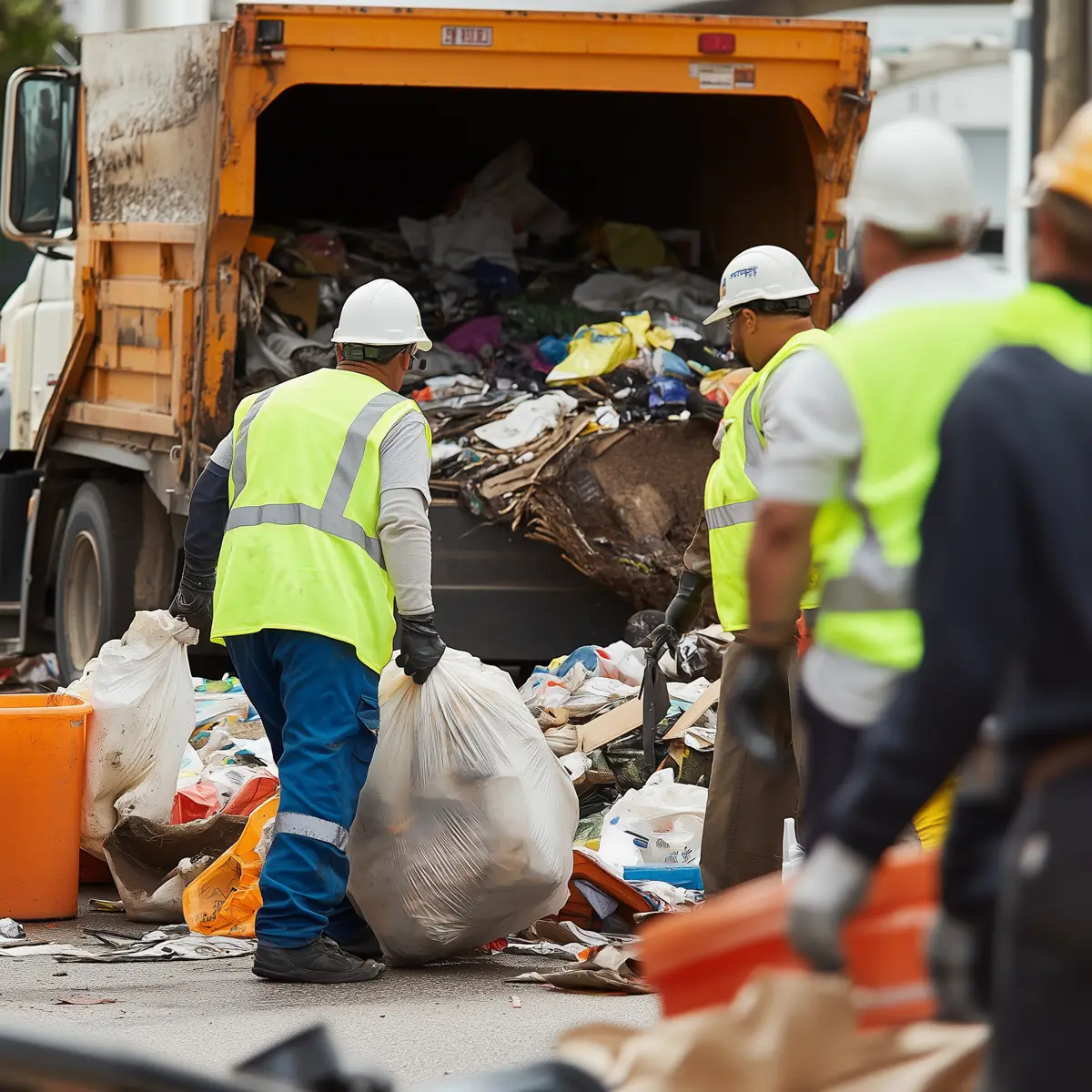 Creating a hazardous waste processing proposal is important for organizations that generate hazardous waste and are seeking to manage it. The Proposal Kit offers a comprehensive suite of templates and software designed to streamline the proposal writing process. These resources help hazardous waste generators create detailed and organized proposals, addressing key components such as hazardous waste management programs, solid waste management units, and permitted hazardous waste treatment facilities. The Proposal Kit also guides users in developing universal waste plans, addressing emerging contaminants like PFAS, and ensuring compliance with federal regulations.
Creating a hazardous waste processing proposal is important for organizations that generate hazardous waste and are seeking to manage it. The Proposal Kit offers a comprehensive suite of templates and software designed to streamline the proposal writing process. These resources help hazardous waste generators create detailed and organized proposals, addressing key components such as hazardous waste management programs, solid waste management units, and permitted hazardous waste treatment facilities. The Proposal Kit also guides users in developing universal waste plans, addressing emerging contaminants like PFAS, and ensuring compliance with federal regulations.
To manage hazardous waste generation and disposal costs, the Proposal Kit provides templates for project cost summaries, financial planning, and recovery act compliance. It supports the creation of emergency response plans and safety protocols to protect human and environmental health, aligning with the proposed guidelines of the Environmental Protection Agency (EPA). By using these structured templates, organizations can ensure clear regulatory authority, address corrective actions, and meet state authorization requirements. The proposal should also offer guidance on handling solid waste, nonhazardous waste, and toxic substances, including used oil and sludge, while promoting resource conservation and pollution prevention.
Key sections of a well-structured proposal include a cover letter, executive summary, project plan, safety and security strategies, and a project analysis overview. The Kit's customizable templates facilitate the development of industry-specific content, from hazardous materials handling to the storage of secondary containment units. It also supports the inclusion of project budgets, recommendations, and appendices for additional documentation.
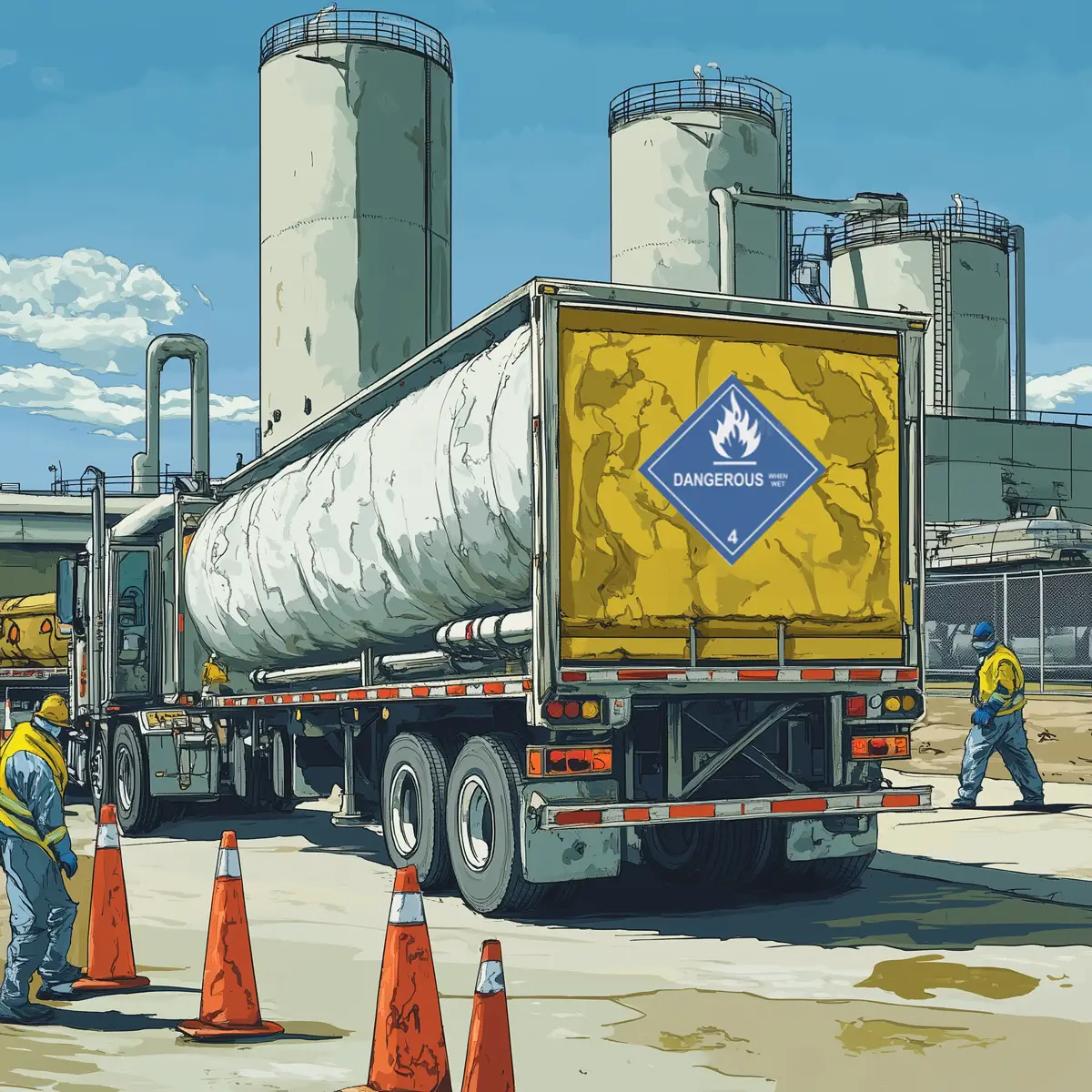 Using Proposal Kit, organizations can convey their commitment to environmental protection and compliance, addressing the needs of communities and stakeholders. This approach not only enhances the proposal's persuasiveness but also its alignment with the latest industry trends and federal register notice requirements. Ultimately, the Proposal Kit helps users develop robust proposals that are crucial for securing funding, implementing innovative waste processing methods, and contributing to a sustainable future.
Using Proposal Kit, organizations can convey their commitment to environmental protection and compliance, addressing the needs of communities and stakeholders. This approach not only enhances the proposal's persuasiveness but also its alignment with the latest industry trends and federal register notice requirements. Ultimately, the Proposal Kit helps users develop robust proposals that are crucial for securing funding, implementing innovative waste processing methods, and contributing to a sustainable future.
Expanding on the importance of creating a well-structured hazardous waste processing proposal, organizations that generate hazardous waste face the challenge of adhering to complex regulations while ensuring environmental safety. The Proposal Kit's templates are invaluable tools for providing clear regulatory authority and addressing EPA proposed rules. These templates assist organizations in navigating the rulemaking process, ensuring compliance with RCRA corrective action authority, and planning for RCRA-permitted treatment of waste.
The primary purpose of these proposals is to ensure that hazardous waste is properly segregated, transported, and disposed of in approved facilities, thereby minimizing disposal fees and environmental impacts. By integrating templates from Proposal Kit, organizations can efficiently address emerging contaminants, such as polyfluoroalkyl substances (PFAS), and ensure that operations are aligned with statutory definitions and the regulatory definition of solid wastes.
 For instances like New Mexico's petition to address PFAS contamination, using a Proposal Kit helps gather relevant information and create proposals that emphasize the main objectives, such as reducing exposure and ensuring compliance with environmental protection standards. These templates offer guidance on handling small quantities of waste, ensuring they are labeled, stored in sealed containers, and tested to prevent leaks and contamination.
For instances like New Mexico's petition to address PFAS contamination, using a Proposal Kit helps gather relevant information and create proposals that emphasize the main objectives, such as reducing exposure and ensuring compliance with environmental protection standards. These templates offer guidance on handling small quantities of waste, ensuring they are labeled, stored in sealed containers, and tested to prevent leaks and contamination.
The Proposal Kit also facilitates the development of comprehensive environmental health and safety (EHS) plans that include employee training and inspections, ensuring that the workforce is knowledgeable about the characteristics and toxicity of various hazardous materials, including mercury and solvents. With customizable options, users can incorporate industry-specific practices to address challenges unique to their operations, whether dealing with pesticides, batteries, or nonhazardous waste streams that might be mixed in commercial settings.
By using Proposal Kit, organizations can ensure that their proposals are not only detailed and compliant but also persuasive in securing funding and support for initiatives such as hazardous waste recycling programs and facility expansions. This approach promises to enhance community safety and environmental health while reducing the overall footprint of hazardous waste. The Proposal Kit is instrumental in empowering organizations to meet their environmental goals and contribute positively to the broader objective of sustainable waste management.
 The Proposal Kit serves as a resource for entities that generate hazardous waste. It addresses the complexities of hazardous waste subject to EPA regulations, including those related to transportation and disposal facilities. The customizable templates help organizations align with RCRA corrective action authority and RCRA-permitted treatment standards, ensuring that hazardous waste is processed in a manner that is compliant with federal guidelines.
The Proposal Kit serves as a resource for entities that generate hazardous waste. It addresses the complexities of hazardous waste subject to EPA regulations, including those related to transportation and disposal facilities. The customizable templates help organizations align with RCRA corrective action authority and RCRA-permitted treatment standards, ensuring that hazardous waste is processed in a manner that is compliant with federal guidelines.
The Proposal Kit aids in articulating comprehensive strategies that cover both immediate and long-term corrective actions. By following the methods outlined in the templates, organizations can gather information, ensuring that every topic of their proposal is robust and compliant. This process involves cooperation with EHS offices and relevant departments, emphasizing the importance of detailed investigations and testing, especially in locations where hazardous waste is generated.
The proposal should also emphasize the importance of addressing fumes and other environmental hazards, promoting methods that reduce reliance on landfills by focusing on the potential for waste to be reused or reclaimed. In certain sections, guidelines provide insights into minimizing energy consumption and exploring alternative methods of waste processing, such as those that use electricity in lieu of traditional disposal techniques. The templates are designed to accommodate the unique needs of different industries, recognizing that the acceptable quantity of waste and the methods of disposal can vary widely.
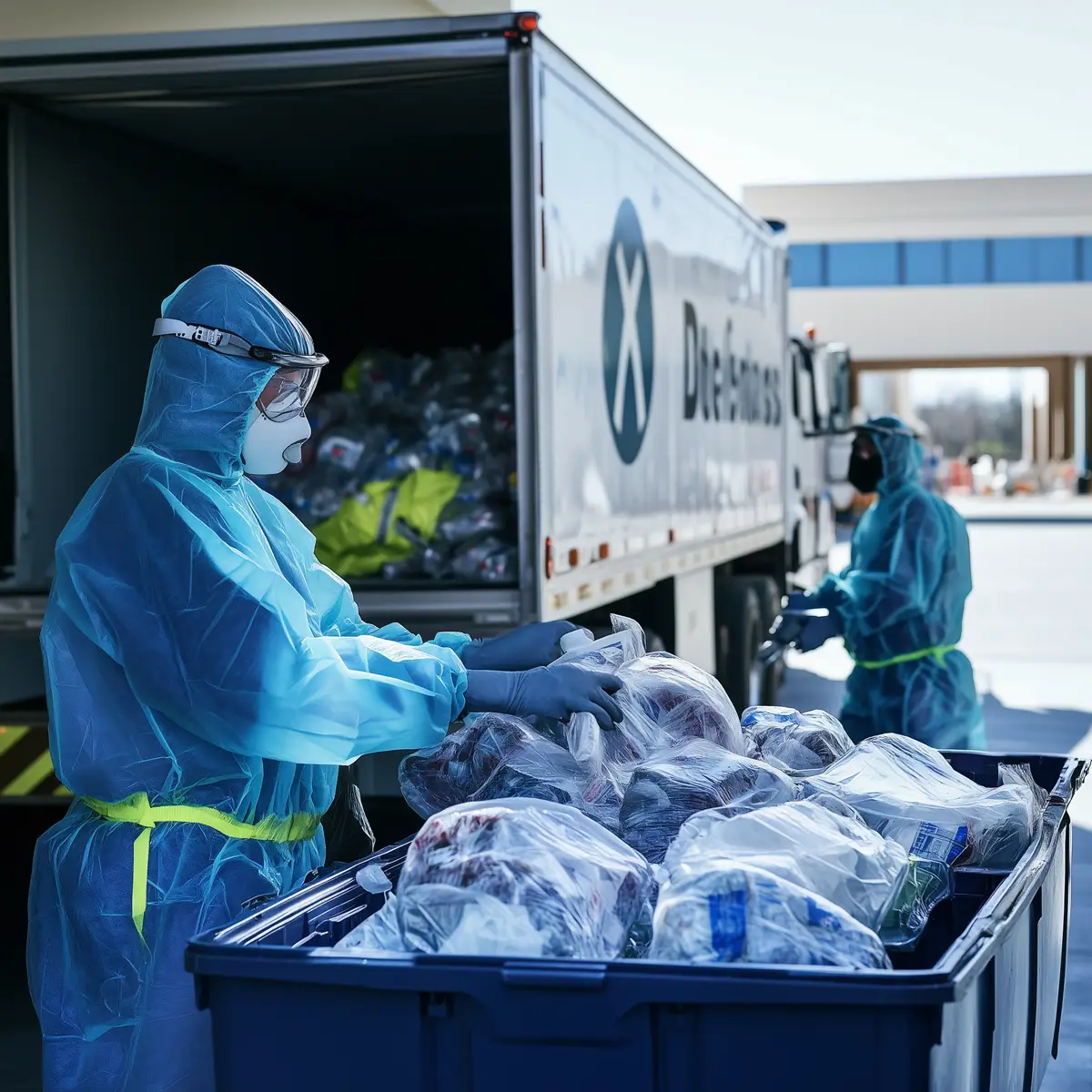 Information provided through the Proposal Kit is tailored to meet the needs of diverse stakeholders, from employees involved in the daily handling of hazardous materials to labs conducting critical groundwater testing. These templates support organizations in maintaining compliance with the environmental protection agency's standards, addressing both current and anticipated regulations as reflected in two rulemakings set forth by the EPA.
Information provided through the Proposal Kit is tailored to meet the needs of diverse stakeholders, from employees involved in the daily handling of hazardous materials to labs conducting critical groundwater testing. These templates support organizations in maintaining compliance with the environmental protection agency's standards, addressing both current and anticipated regulations as reflected in two rulemakings set forth by the EPA.
In creating proposals, organizations are empowered to demonstrate their commitment to sustainable practices and regulatory compliance, ultimately reducing the environmental footprint of hazardous waste management. This commitment extends to efforts in education and training, ensuring that employees understand the legal and practical implications of hazardous waste handling, including the proper mixing and labeling of materials and the management of prohibited items like syringes. By using the Proposal Kit, organizations can achieve a comprehensive understanding of hazardous waste management, facilitating informed decision-making and effective implementation of waste processing strategies.
Frequently Asked Questions
What is the best way to start writing a hazardous waste processing proposal?
Using Proposal Kit's structured templates and software is the best way to start writing your hazardous waste processing proposal. These resources guide you through each section, ensuring you cover all critical aspects.
How can Proposal Kit help me address safety concerns in my hazardous waste processing proposal?
The proposal Kit includes specific templates for safety and emergency response plans. These templates help you develop detailed protocols to ensure the safety of your facility, staff, and community.
Can I customize the templates provided by the Proposal Kit to fit my specific needs?
Yes, Proposal Kit's templates are highly customizable, allowing you to tailor each section to fit the unique requirements of your hazardous waste processing project.
How does Proposal Kit assist with the financial aspects of the proposal?
Proposal Kit includes a line item quoting database system that helps you create detailed cost summaries, quotes, estimates, and budgets, ensuring your financial plans are thorough and accurate.
What format are the Proposal Kit templates in, and how can I deliver the final proposal?
The templates are in Word format, making them easy to edit. Once you have completed your proposal, you can save it as a PDF for delivery.
15% Off Discount
![]() Add To Cart This Word Template Only
Add To Cart This Word Template Only
 Add To Cart Proposal Pack for Any Business
Add To Cart Proposal Pack for Any Business
 Add To Cart Proposal Kit Professional Bundle
Add To Cart Proposal Kit Professional Bundle
 4.7 stars, based on 846 reviews
4.7 stars, based on 846 reviewsProposal Kit chapters used in this template
Cover Letter, Title Page, Table of Contents, Executive Summary, Industry Trends, Project Analysis Overview, Project Plan, Project Methods, Project Background, Project Management, Project Oversight, Project Cost Summary, Project Budget, Project Process Summary, Hazardous Materials, Security Plan, Safety Plan, Emergency Response Plan, Recommendations, Company History, Team Members, References, Appendices, Back Page
Included Calculator Spreadheets
These Excel calculator spreadsheets are included with this template. If you purchase a Proposal Pack or the Professional Bundle, these proposal pages are generated using an automated line-item database in the included Wizard software. The calculator spreadsheets are intended for use when purchasing only the static Word template.
You use this proposal for
- General business proposal
- Non-technical proposal
- Project pitch proposal
- Security, safety, protection, investigation proposal
How to create this template with Proposal Pack Wizard
You can create this document using any of the logo-designed Proposal Packs. Pick any Proposal Pack with a logo design theme you like best; they will all work equally well. The Proposal Pack for Any Business is the pack with no extra added logos or colors - designed to be used plain or for you to customize with your logos and graphics.
The Proposal Pack design theme you purchase will determine the visual look of this template. The screenshot above only shows the plain generic design theme. Names and stories in examples are fictional; however, the templates are from real client use cases.
We include a library of chapters to be assembled based on your needs. All proposals are different and have different needs and goals. We designed Proposal Pack so you can customize the documents to suit your needs.
You will best create this document using the Proposal Pack Wizard - Expert Edition software to select this template and build it in the Proposal Pack logo design theme of your choice along with any desired customizations (such as adding additional chapters, removing unneeded chapters, changing the order of chapters, and importing your company logo). This template outlines a proposal for the described situation. Each user is responsible for typing in the actual content of the provided pages with their information to complete the proposal. Suggestions in the abstract may include features in higher-end packages and are facilitated by the selection of chapter templates to support the narrative of each proposal, which help guide the user in filling in the details.
You create this template using the Wizard software with an entire Proposal Pack library and software. We include the Expert Edition of the software in the Proposal Kit Professional bundle. Microsoft Word for Windows is required to use the customizing software. You can also edit Word document templates in other office software such as Word for Mac. We will assist Mac users in assembling complex templates for their first project if they do not have the required platform to run the Wizard software.
You only get the single assembled Word document if purchased as a stand-alone template. The individual template products include no other templates, samples, or software.
How to Build Templates Featured on Proposal Kit Website
Many people find the Proposal Kit website after searching for a specific proposal. Once you've purchased and installed the software, how do you build that template you found in the first place? This video shows you how to build any proposal you see on the Proposal Kit website.
Key Takeaways
- The Hazardous Waste Processing Proposal is available as a ready-to-edit template.
- You can create unlimited custom variations of this template using a Proposal Pack or the Professional Bundle.
- Using a Proposal Pack or Professional Bundle, you can automate quotes and other financial pages with a line-item database.
- There are no ongoing subscription fees. You get lifetime unlimited use.
- We made Proposal Kit for freelancers, small businesses, and non-profits.
- Proposal Kit product content (templates, samples, software) is 100% written by humans.
 Ian Lauder has been helping businesses write their proposals and contracts for two decades. Ian is the owner and founder of Proposal Kit, one of the original sources of business proposal and contract software products started in 1997.
Ian Lauder has been helping businesses write their proposals and contracts for two decades. Ian is the owner and founder of Proposal Kit, one of the original sources of business proposal and contract software products started in 1997.By Ian Lauder
 Published by Proposal Kit, Inc.
Published by Proposal Kit, Inc.


 Cart
Cart

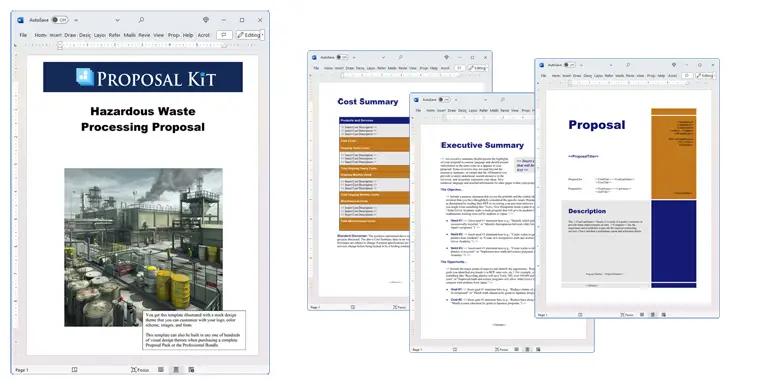
 Get 15% off ordering today:
Get 15% off ordering today: 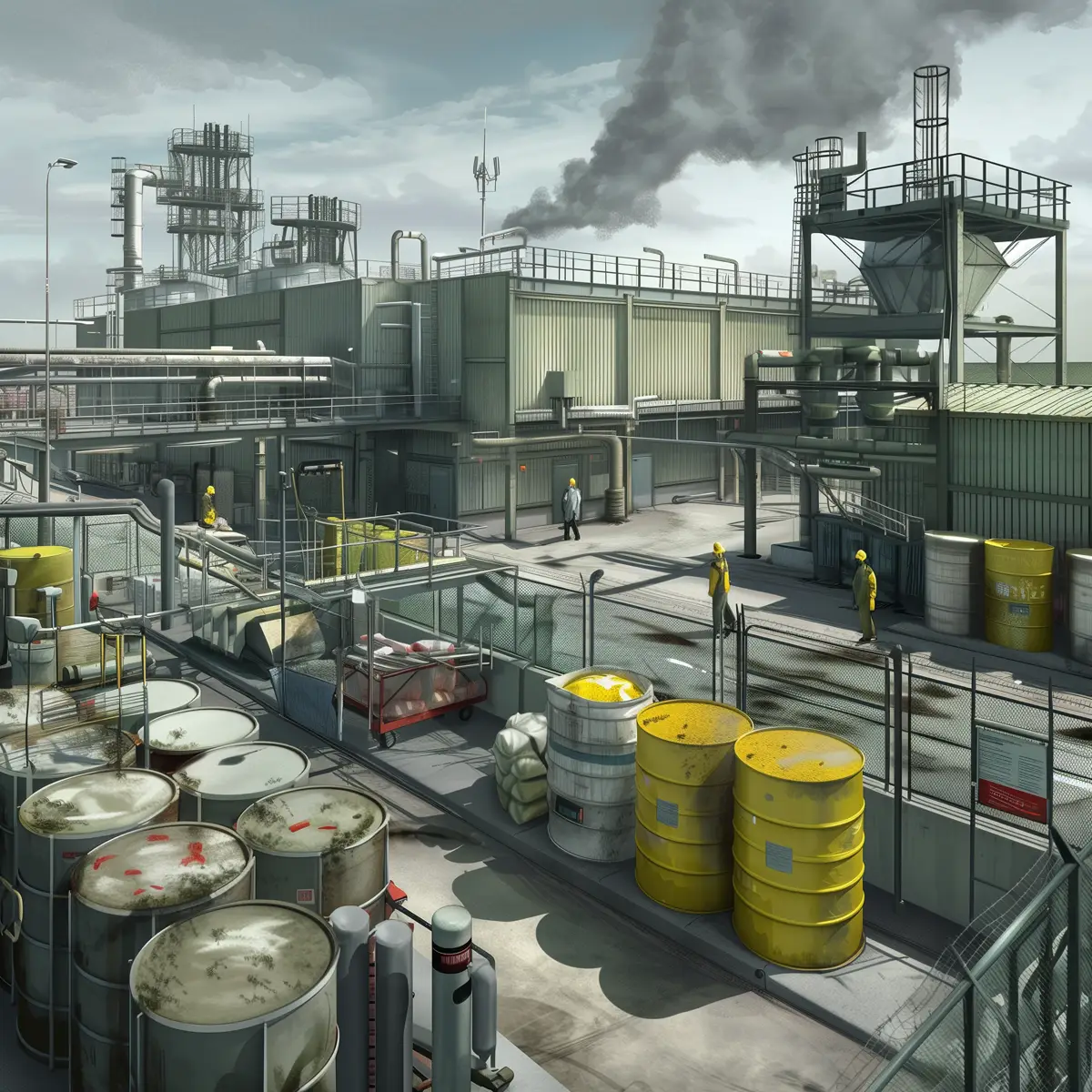

 Facebook
Facebook YouTube
YouTube X
X Search Site
Search Site